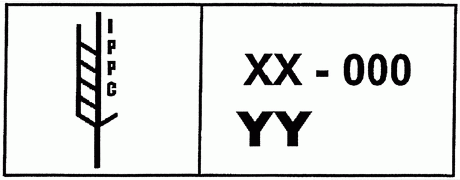ISPM15 and International Shipping
Moving across International Borders
What is ISPM 15?
This standard deal specifically with the international transportation of wood and this will include all packaging materials, wooden crates and even pallets which has been manufactured from wood. According to the ISPM 15 standard all such wood used for transportation requirements has to be debarked and then they have to be treated with high temperatures and furthermore they have to be submitted to a fumigation process where in products are used which are complying with regulations which has been implement and once the necessary steps has been taken these wooden objects has to be stamped in order to certify that they are complying with the ISPM 15 standard. Although this spreading of harmful pests internationally could not be stopped entirely, there can be no doubt that since the implementation of the current regulations it has become entirely possible to prevent major catastrophes especially when everyone participate.
ISPM15 is The International Standard for Phytosanitary Measures, publication no. 15. The ISPM15 was developed by the International Plant Protection Convention (IPPC) as part of the United Nations Food & Agriculture Organization (FAO) to regulate wood packaging material used in international shipping and trade industry. The regulation of ISPM 15 was used to help prevent the pests and diseases related to trees and plants spread across the borders by using treated wooden packaging material such as wooden crates, wooden pallets and wooden boxes. And this is made possible by the cooperation of UN-member governments.
ISPM15 regulations apply to non-coniferous hardwood and coniferous softwood that is used for raw wood packaging materials. These measures do not apply to wood packaging that consists of manufactured products that are wood based such as veneer and plywood, reconstituted wood products (chipboard, press wood, oriented strange board, high density fiber board, particle board, and medium density fiber board) or to products that have been created with any combination of glue, heat and pressure.

All treated wooden packaging material used for international shipping should have the IPPC mark (above) with the exception of plwood.
All details must be indicated within the border of ISMP15 mark and it must have a vertical line which separates the IPPC logo (found on the left) from the identification data. The lines of the border may be broken or solid and in some circumstances the corners may be rounded.
XX - these markings indicate where a two letter country code (ISO) is placed. If the wooden material was treated in Japan, it will say “JP”.
0000 - the identification mark of the packaging manufacturer or wood treatment agent is shown in a series of letters and numbers. These variables may depend upon what country they originated from - most of the material available in Japan should be of Japanese origin.
The code of the country and manufacturer or treatment agent code must always be separated by a hyphen.
YY - These letters indicate the type of treatment, which will either be Heat Treatment (HT) or Methyl Bromide (MB)
There are many regulation to consider when shipping internationally
Besides the purely logistical considerations when moving house hold objects across international borders there are also several other factors relating to pest control which should be considered especially as they relate to wood furniture or other wooden packaging material. This is because wood has the potential to be a natural habitat for many kinds of insect plagues which if not controlled could have a negative impact on the eco system of the shipping destination country. This is why the ISPM 15 standard has been implemented which deals specifically with the containment of wood born pests. Each country all over the planet has plant life, insects and other animals which are native to such a country but since ancient shipping has allowed humanity to cross over large oceans it has been noticed that it often happens that the native species of one continent are then passed along to another country where it mostly have a negative impact upon the ecosystem of the destination country. In this modern age international shipping and moving has grown into a very large industry and this is one of the major reasons why it has become very important to have effective measures in place that are able to contain well-known threats from spreading to other parts of the planet.
Each country has a responsibility in this regard
It is not only governments which are responsible for the survival of our planet but rather it is the responsibility of every human being because if we do not consider the vulnerability of our planet the ability of our planet to survive in the face of a growing worldwide population simply does not look very bright. There may be no inheritance for our children or it may happen that the planet will be in such a state of disrepair that life as we know it currently may no longer be possible. This is exactly why ISMP 15 and other similar standards has been implemented to ensure the long-term sustainability of this planet. We can no longer allow irresponsible actions which may contribute to the destruction of natural habitats and other ecosystems which will make it very difficult for the native species living in those habitats to survive. The removal of only one species could have a drastic impact on dozens of other species making it more difficult for those species to survive.